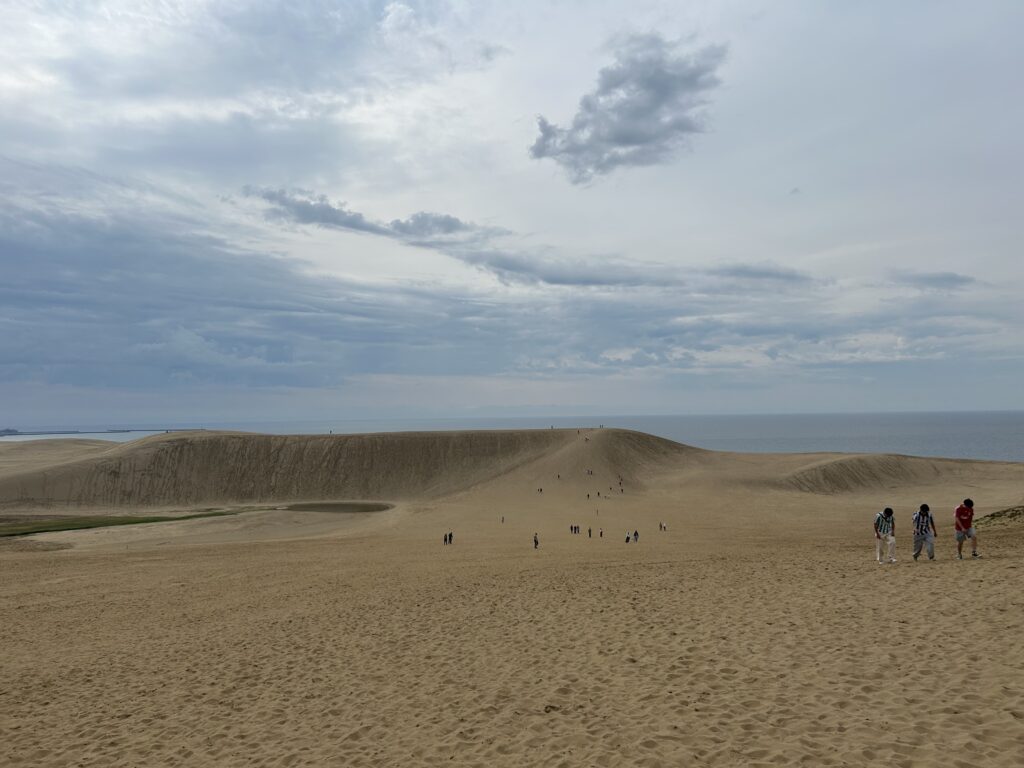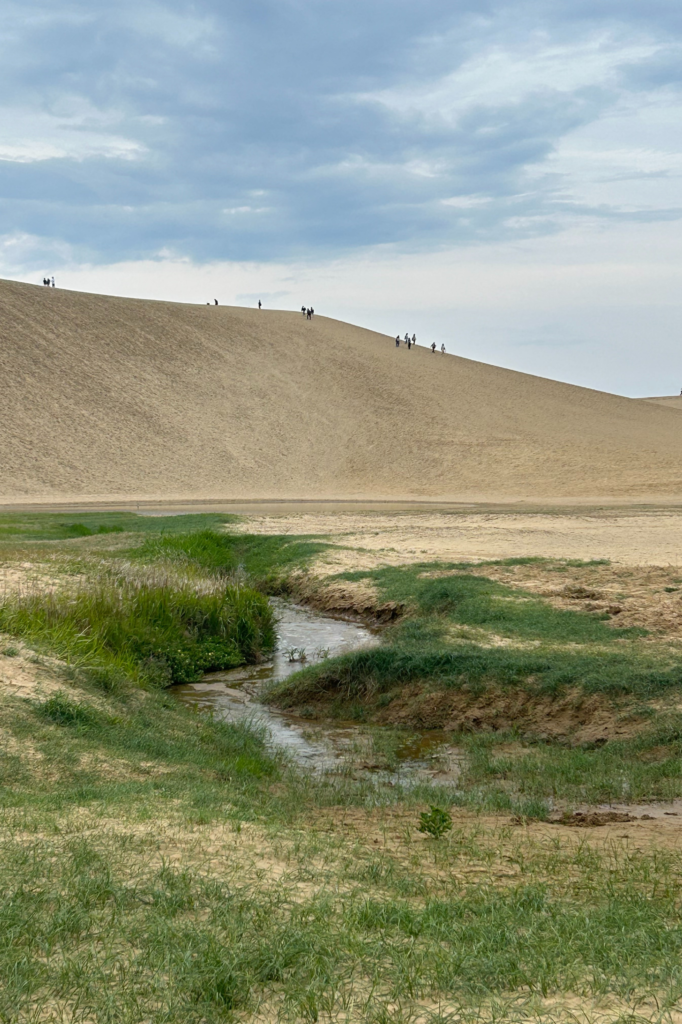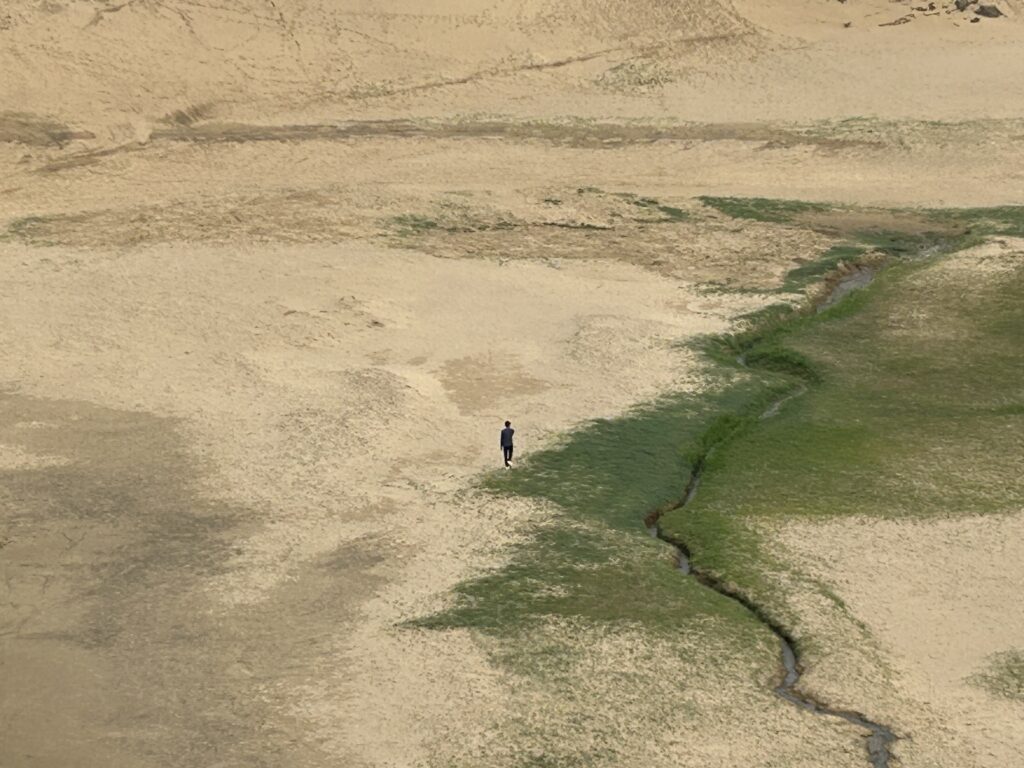The Tottori Sand Dunes are one of Japan’s largest dune systems, stretching for over 16 kilometers along the Sea of Japan coast. Formed by natural processes over thousands of years, the landscape is surprising in a humid, mountainous island like Japan. But for me, what is so rare is the dunes’ shifting beauty. Wind, rain, and sun reshape the landscape continuously, ensuring that no two visits are the same.
As part of the San’in Kaigan National Park, the dunes have long been protected, but this year, local efforts are intensifying to better ensure they can be enjoyed to their fullest by future generations. One initiative is the removal of invasive plants that cover 20 to 30 percent of the dunes, according to the Tottori Sand Dunes Mirai Council, which supports the sustainable use and enjoyment of the dunes.
These plants disrupt natural sand flow patterns and create mounds that lead to erosion and a loss of biodiversity. Without action, these changes can destabilize the delicate dune system, threatening its survival.
In honor of World Sand Dune Day, celebrated annually in June to raise awareness of the ecological value of dunes, I joined a group of eager volunteers for a weeding session. Led by experts, we focused on a preselected area of the dunes for 90 minutes and gathered the weeds in bags so they could later be used to make compost and traditional washi paper.

Join a weeding session
Tourists from all over the world can take part in a weeding session, held every Saturday and Sunday at 6 a.m. until September 7, 2025 (excluding August 16 and 17). Each session offers a fun, hands-on way to give back to the local environment and connect with the community.
After weeding, I recommend stopping by the Tottori Sand Dunes Visitor Center. This modern facility offers interactive exhibits that explain the formation of the dunes, wind-driven sand movement, and the native plants and animals that thrive in this unique environment. Informative touchscreens, educational models, and a live workshop bring the dunes’ natural processes to life, demonstrating the importance of weeding for the dune ecosystem.


View sand art
A short walk from the dunes is the Sand Museum, a permanent indoor exhibition space dedicated to sand art. Established in 2006, it was created to raise awareness of the beauty of the Tottori Sand Dunes while showcasing the artistic potential of sand.
Until January 4, 2026, the museum is displaying Japan, part of its series of exhibits under the theme “Travel Around the World in Sand.” Massive sand sculptures depict the country’s myths, history, and cultural landmarks, from the founding of the nation to the modern era. There is also a huge, beautifully carved interpretation of the World Heritage Site Mt. Fuji, presented as a focal point.
The sculptures have a remarkable level of detail, given they are crafted using only water and sand. Explanation boards display the step-by-step process that artists take over several months to make the art, as well as details about the museum’s history and development.


Getting there
A trip to the Tottori Sand Dunes offers an unforgettable mix of natural wonder, artistic inspiration, and hands-on conservation. Whether you’re strolling on a dune, marveling at detailed sand sculptures, or getting your hands dirty helping the environment, it’s a destination that invites curiosity and connection.
Tottori is easily accessible—around three hours by train from Osaka or 1.5 hours by plane from Tokyo—and local buses connect the train station with the dunes.
For me, the Tottori Sand Dunes offered a side of Japan that I didn’t expect and will not forget.
